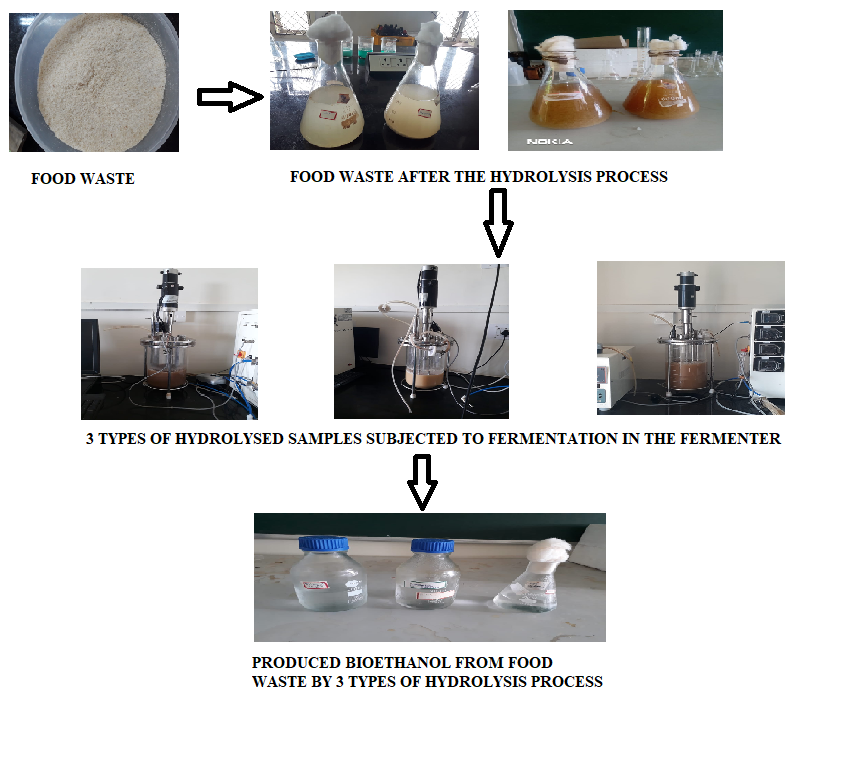
Excessive use of fossil fuels results in the rapid depletion of non-renewable fossil energy resources, a rise in fuel cost, and an uncontrolled emission of greenhouse gases which causes a severe threat to the environment. Bio-fuels are being scrutinized as substitutes for current high-pollutant fuels obtained from conventional sources. To meet the global demands, it becomes necessary to find an alternate source of fuel which is bioethanol. In this work, a strategy to promote ethanol production from Leftover Cooked Rice (LCR) by comparing the different types of hydrolysis was proposed. Process integration comprised of mechanical pretreatment of the leftover cooked rice followed by hydrolysis which was then followed by fermentation. The food wastes of weight 50g taken in each of the 3 fermenters were subjected to acid hydrolysis, enzyme hydrolysis, and combined hydrolysis respectively. Commercially available Baker’s yeast (Saccharomyces cerevisiae) was used for the fermentation process. The fermented samples were subjected to distillation to separate the bioethanol from them. The amount of bioethanol obtained from combined hydrolysis, acid hydrolysis, and enzyme hydrolysis was 400ml, 150ml, and 350ml respectively. Qualitative analysis of ethanol was done by using the Jones reagent. Hence, bioethanol can be produced from leftover cooked rice using the yeast Saccharomyces cerevisiae.
Total file downloads: 30